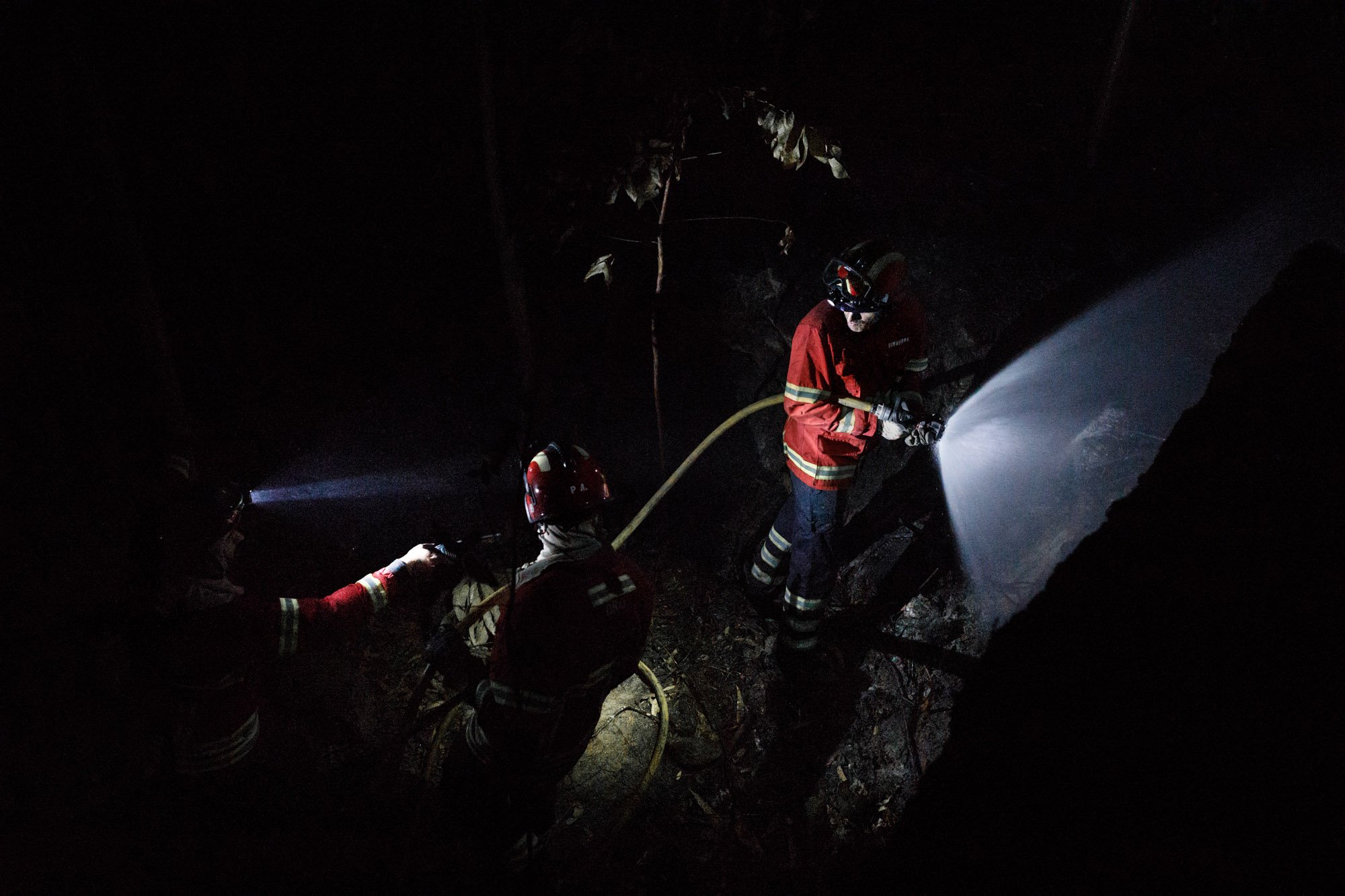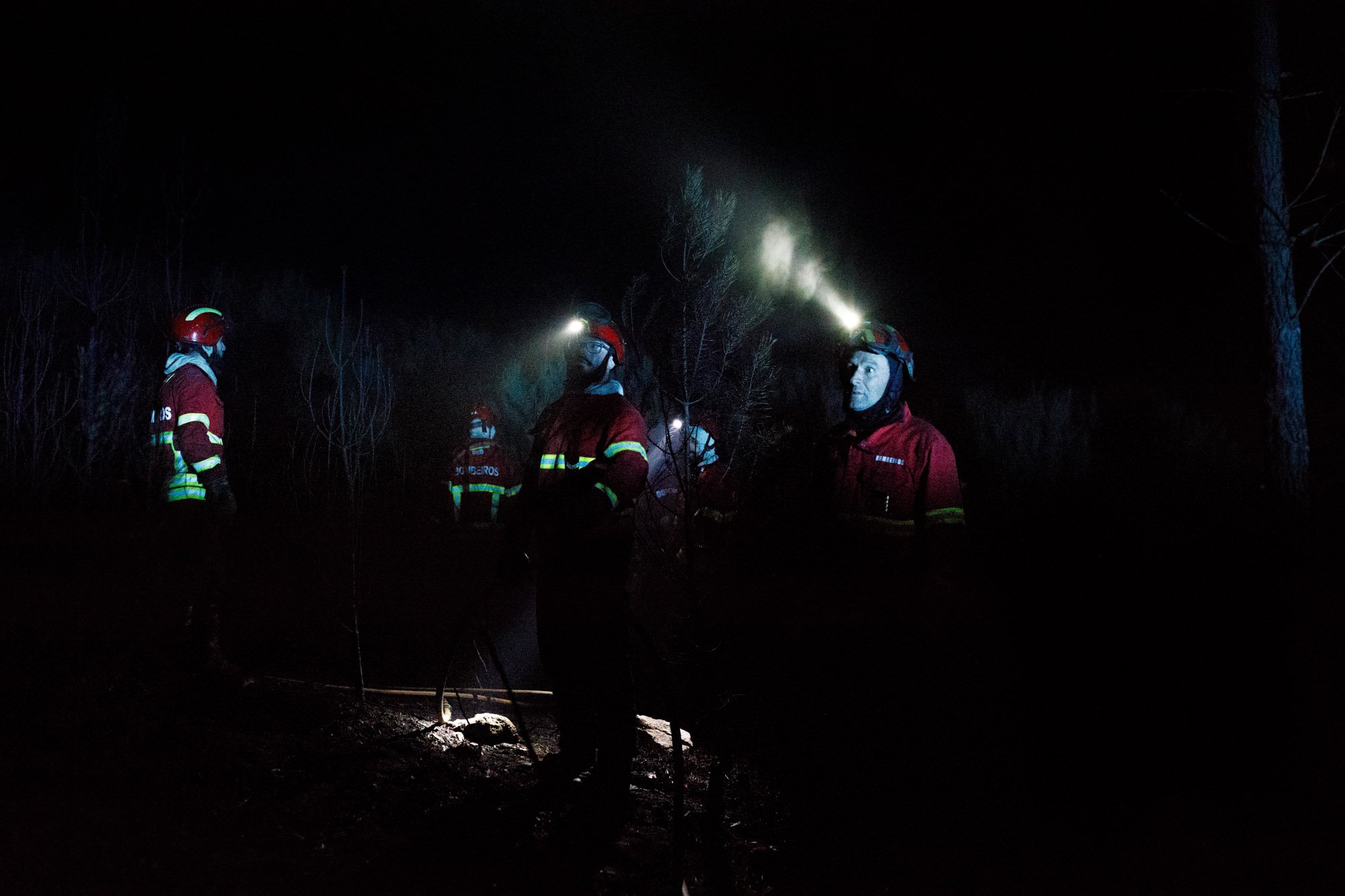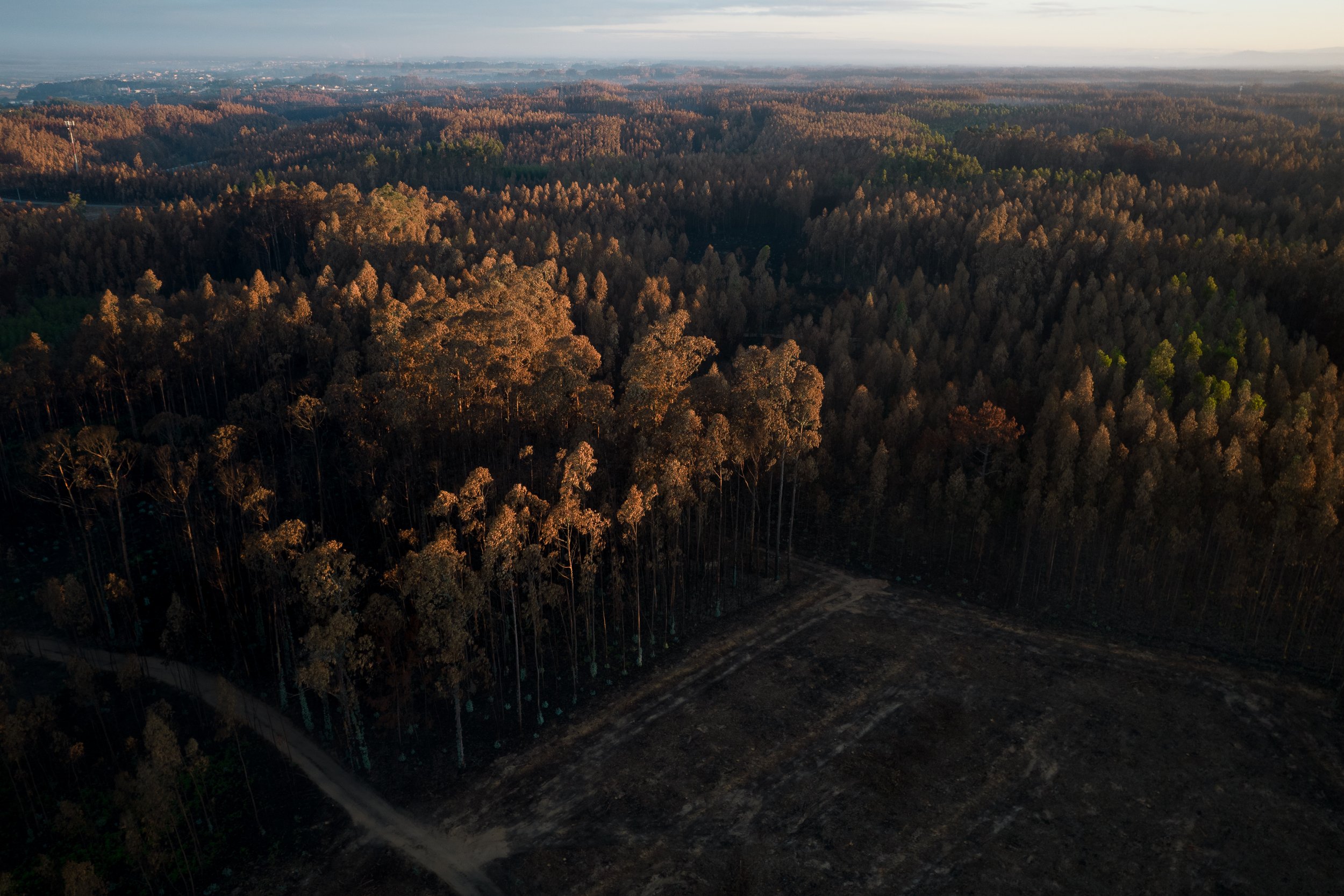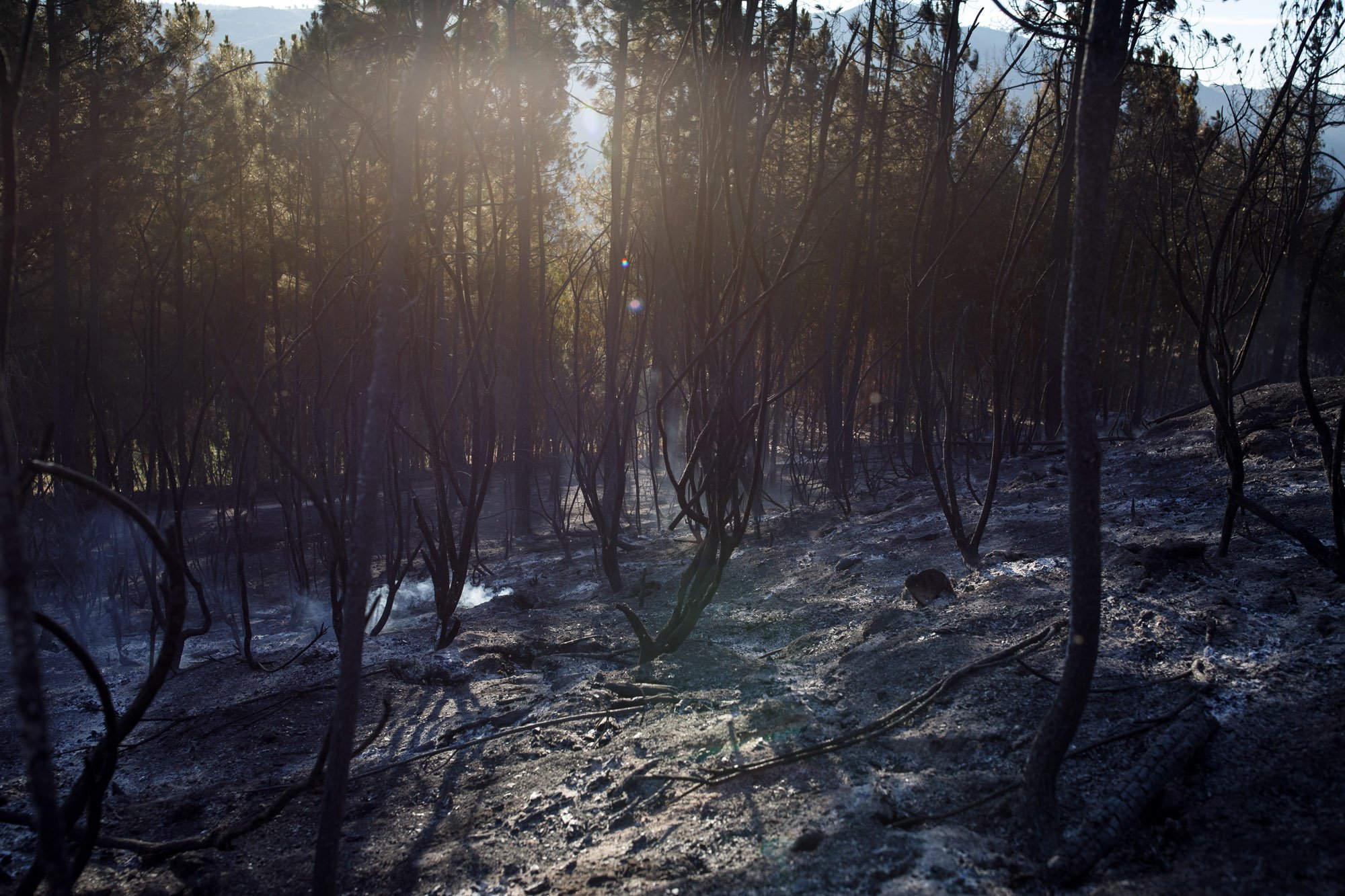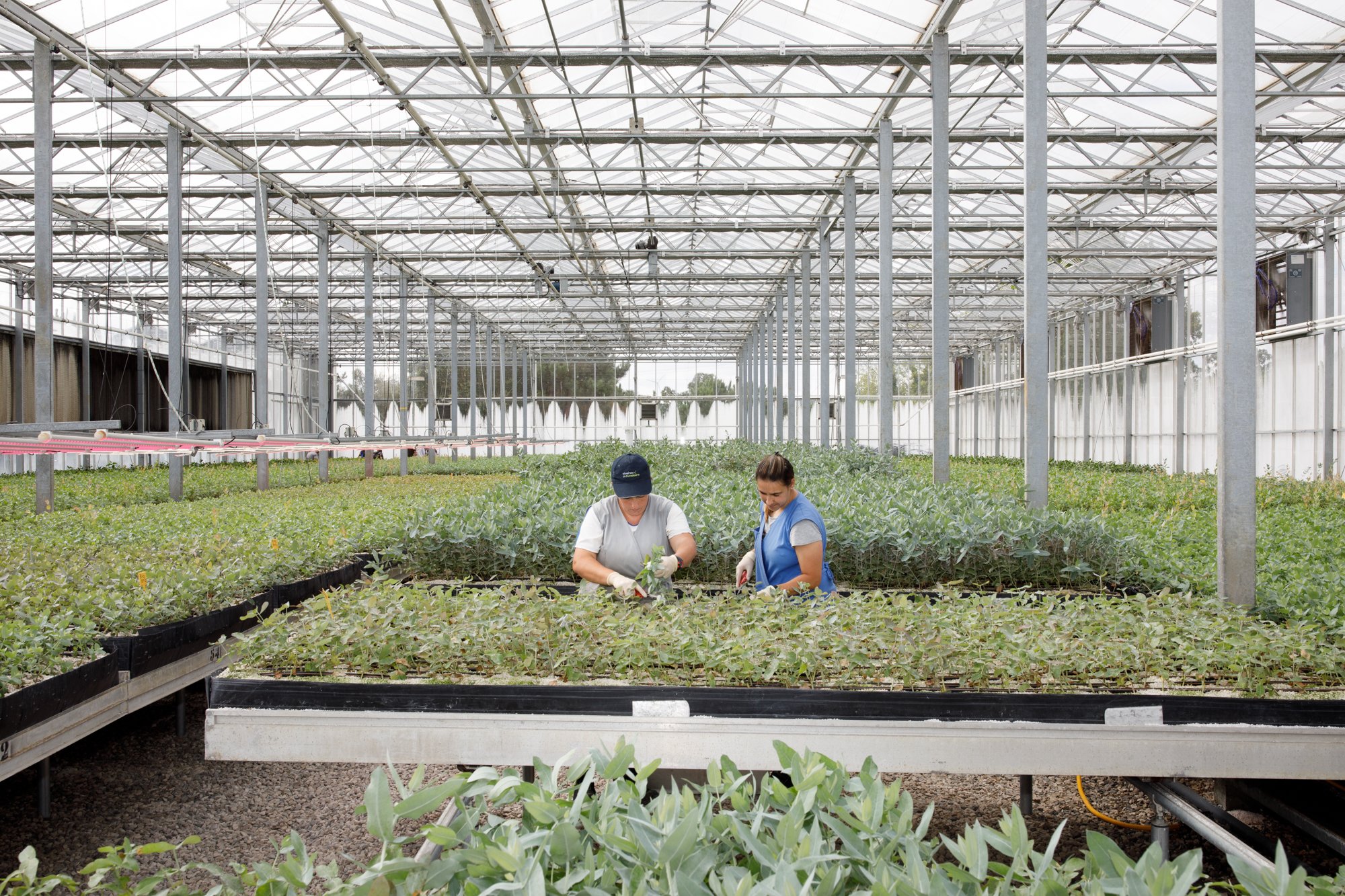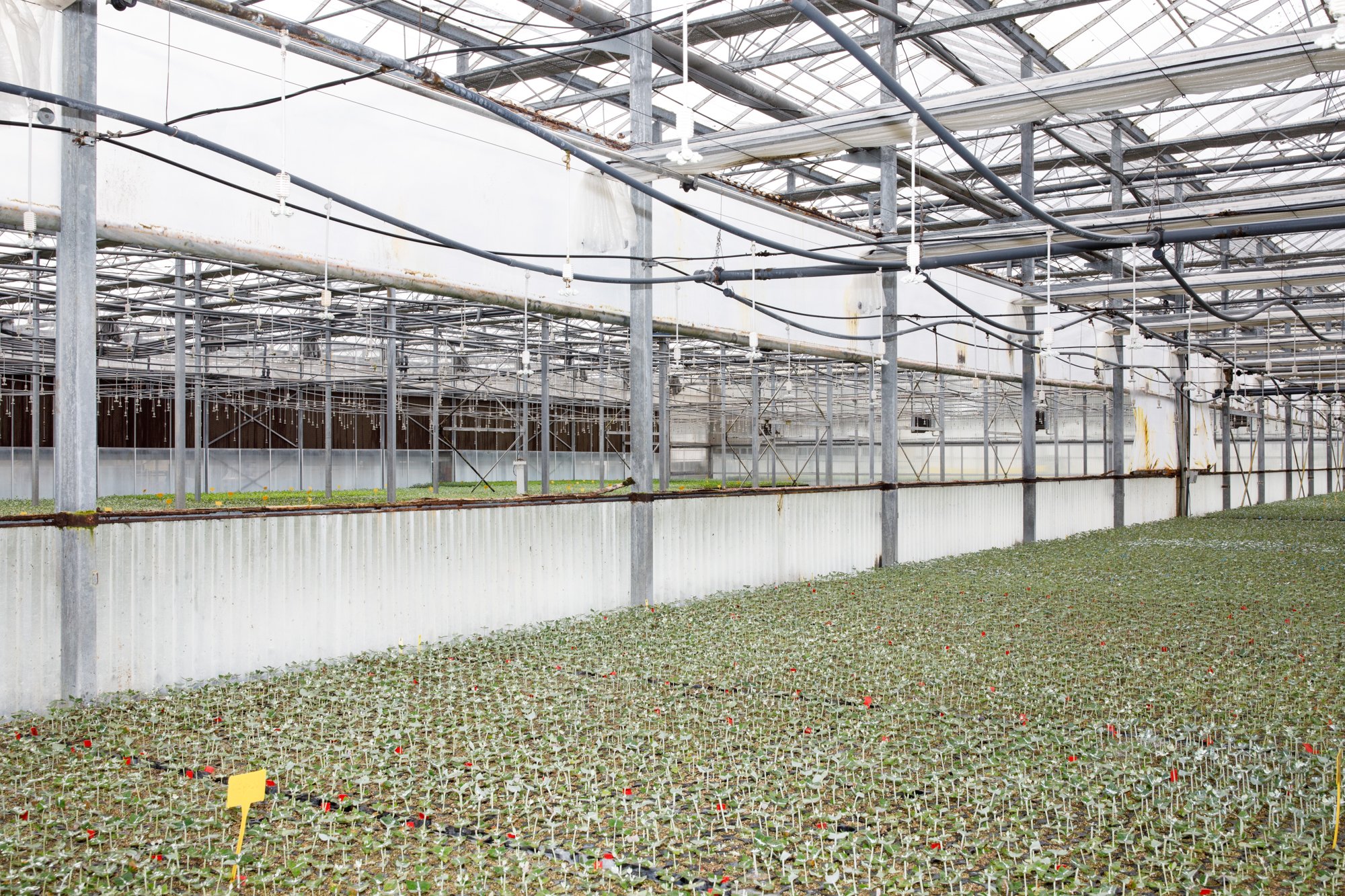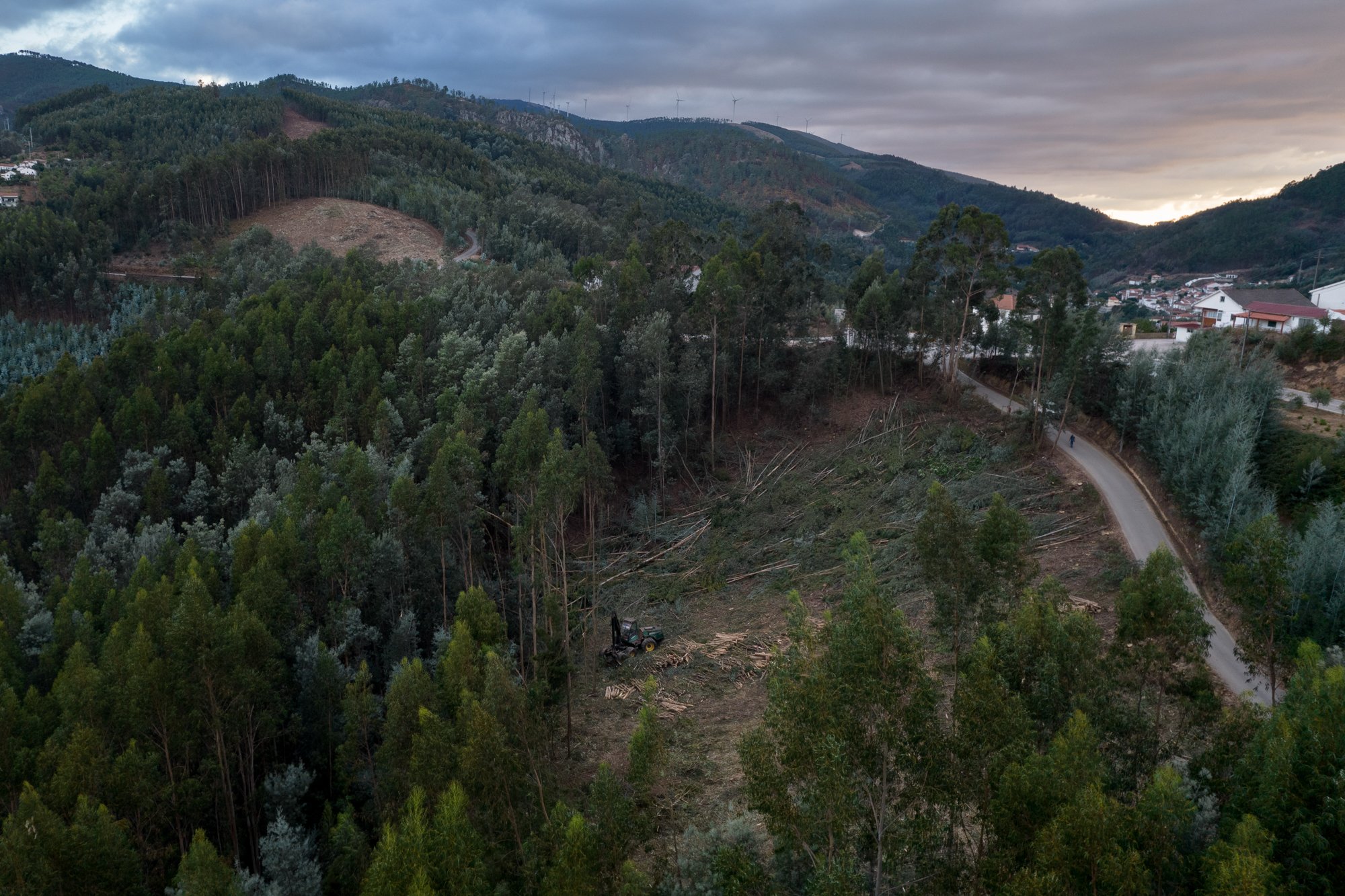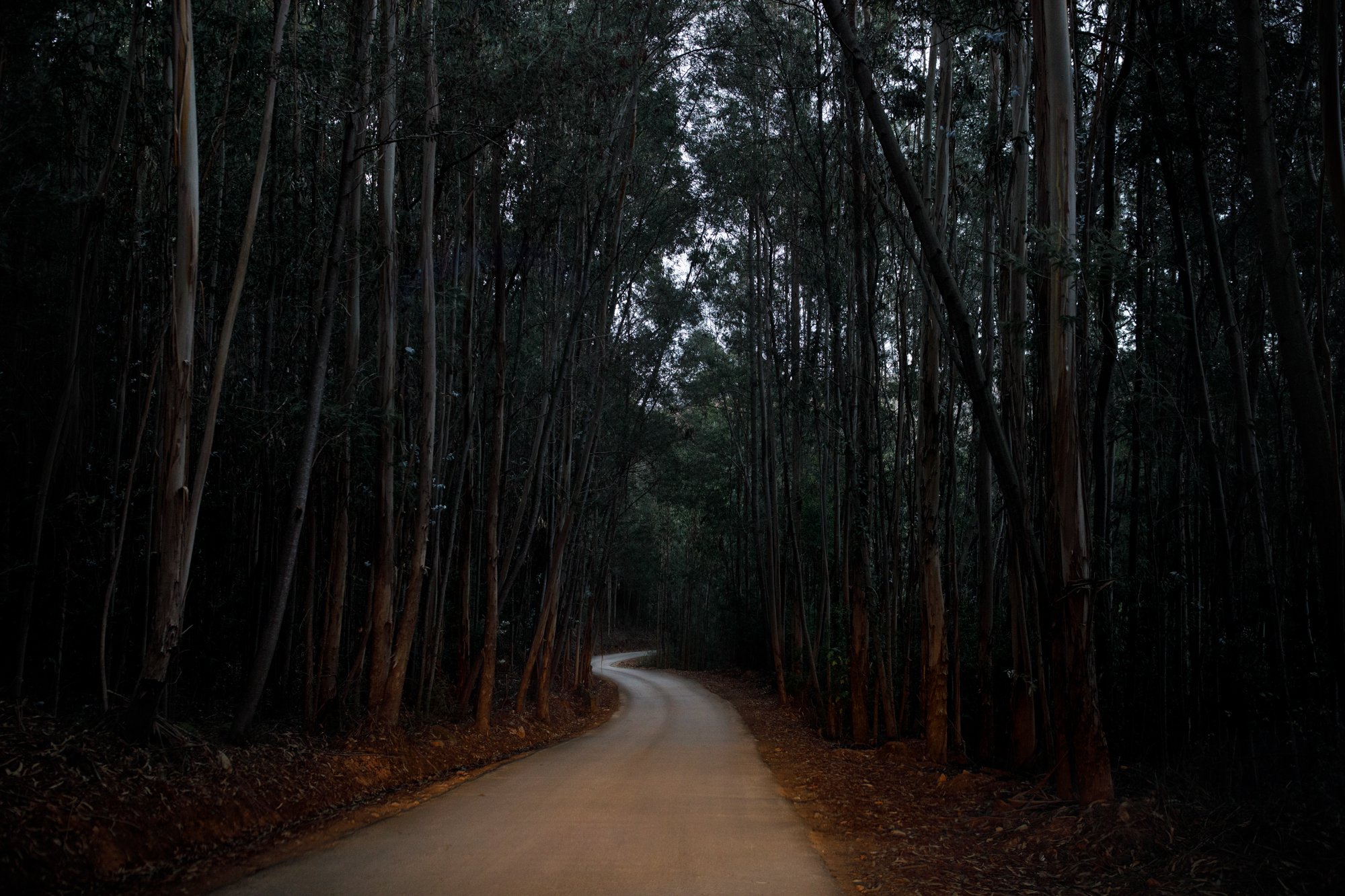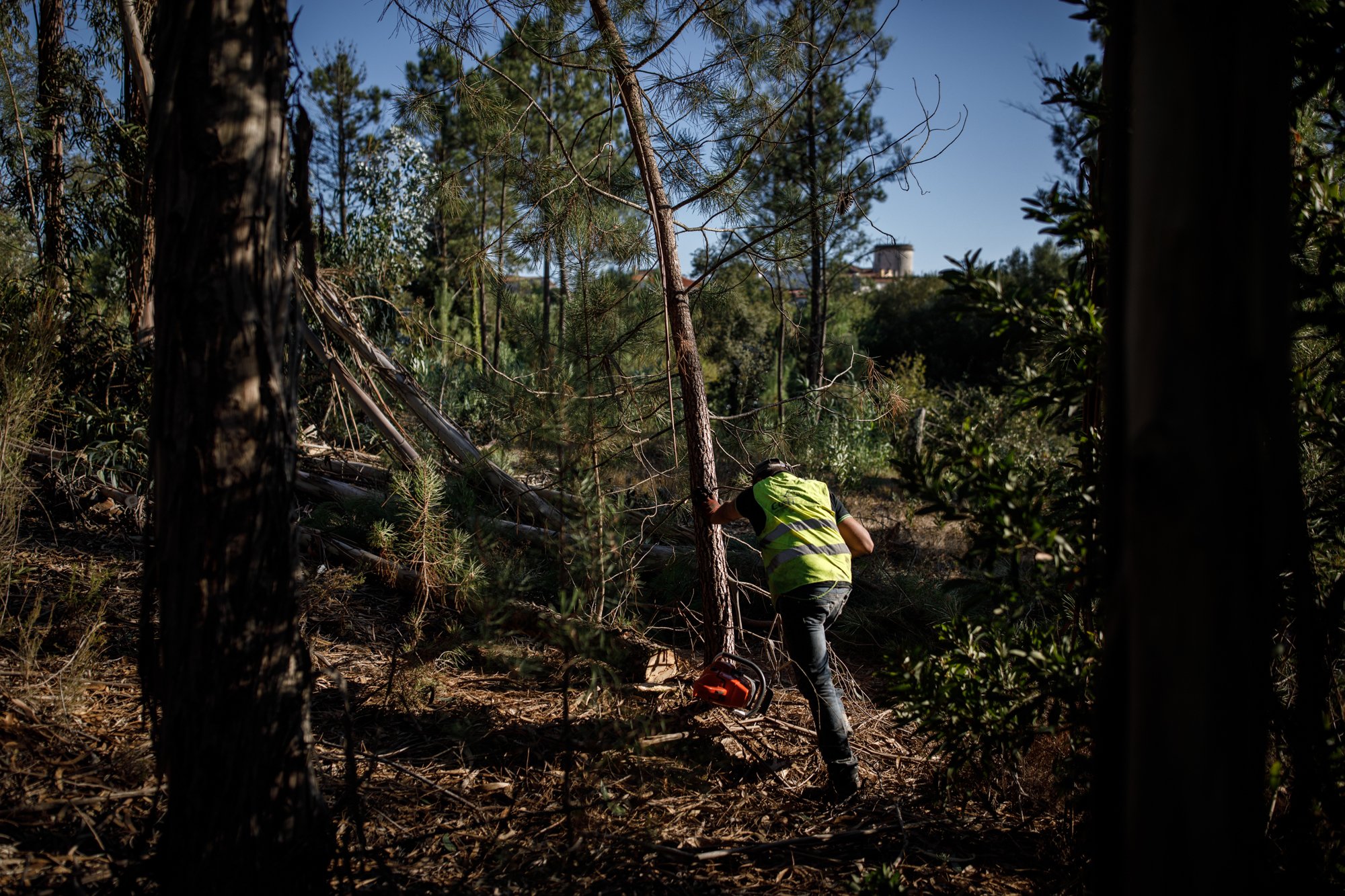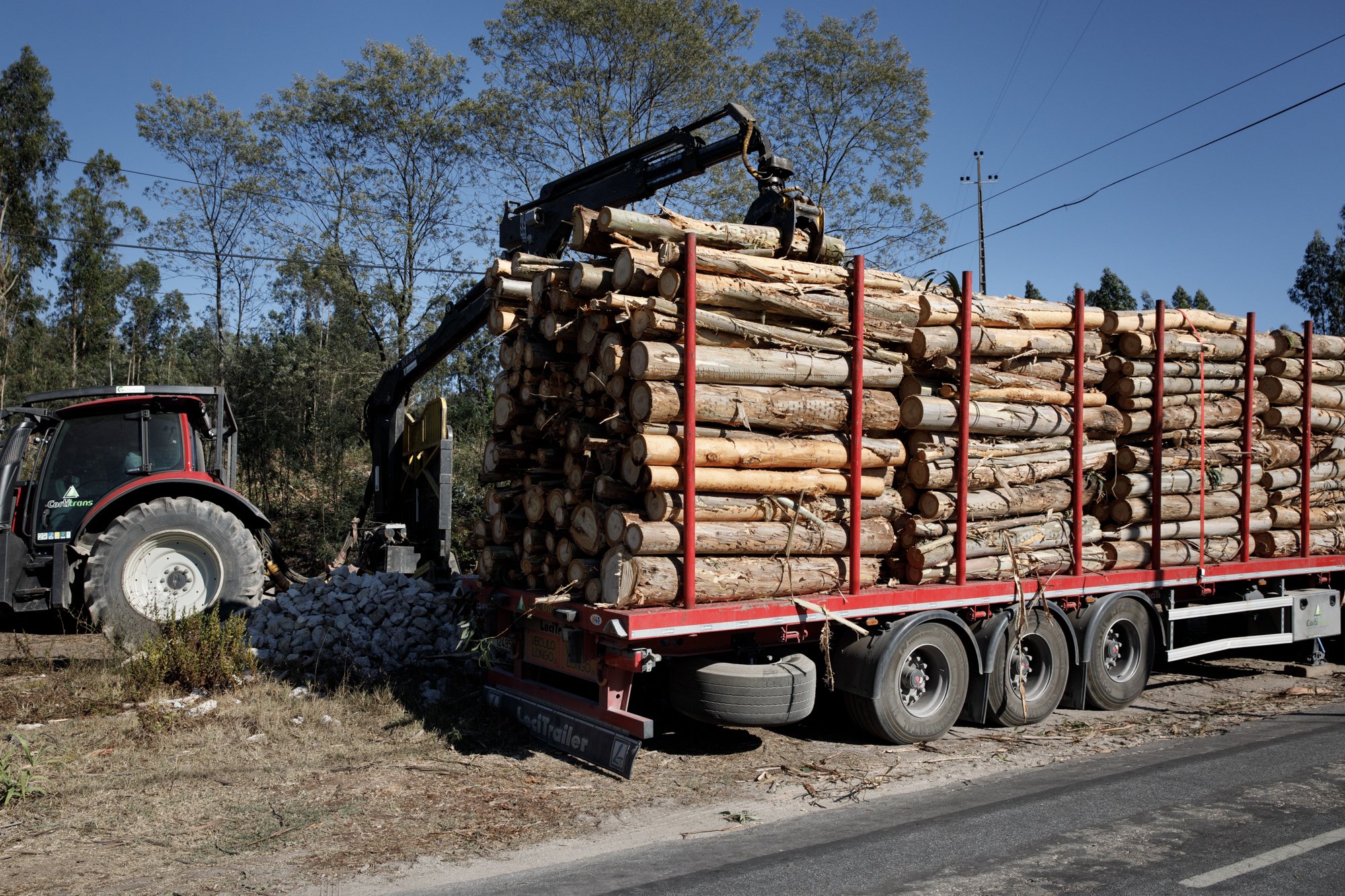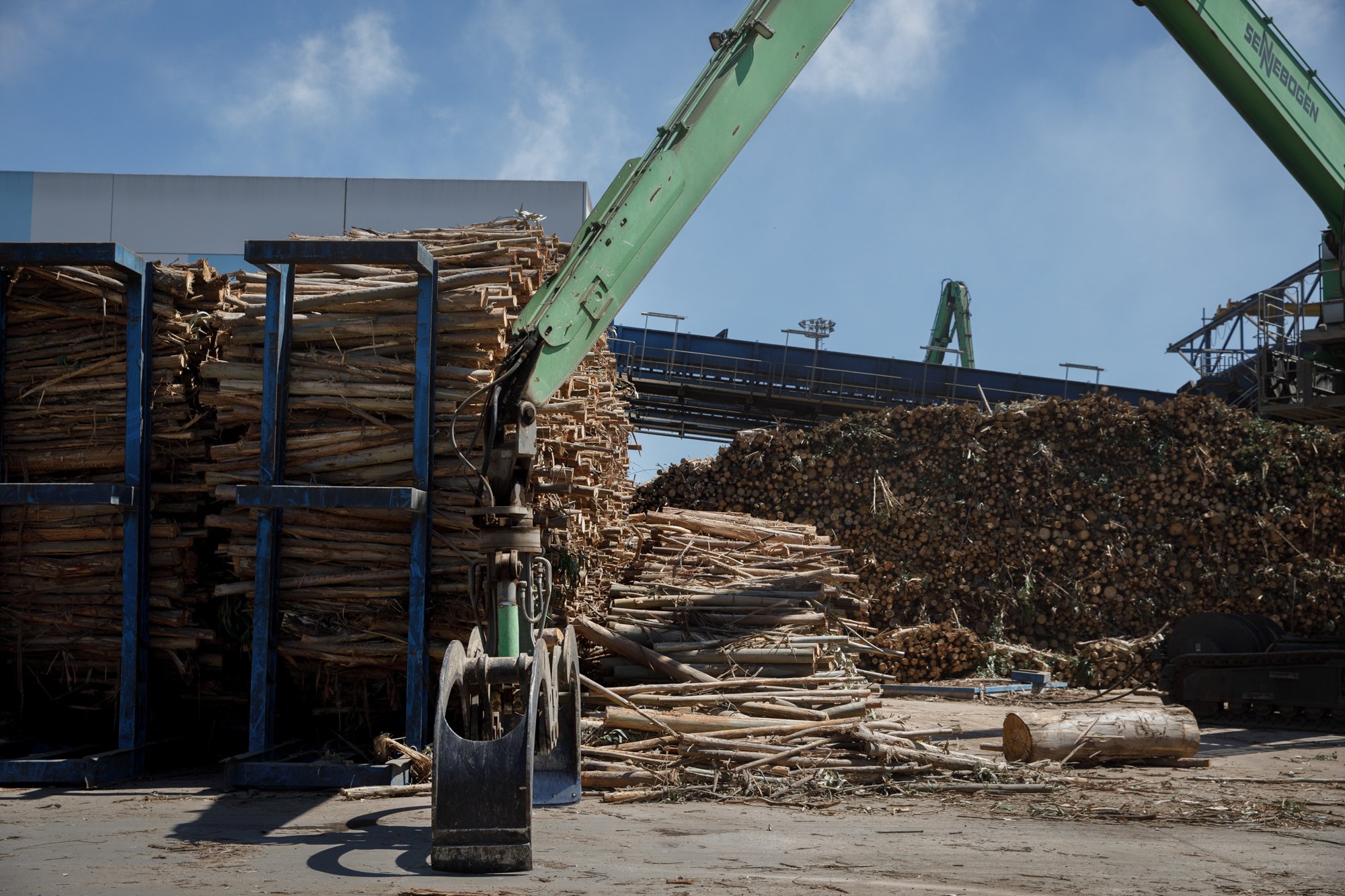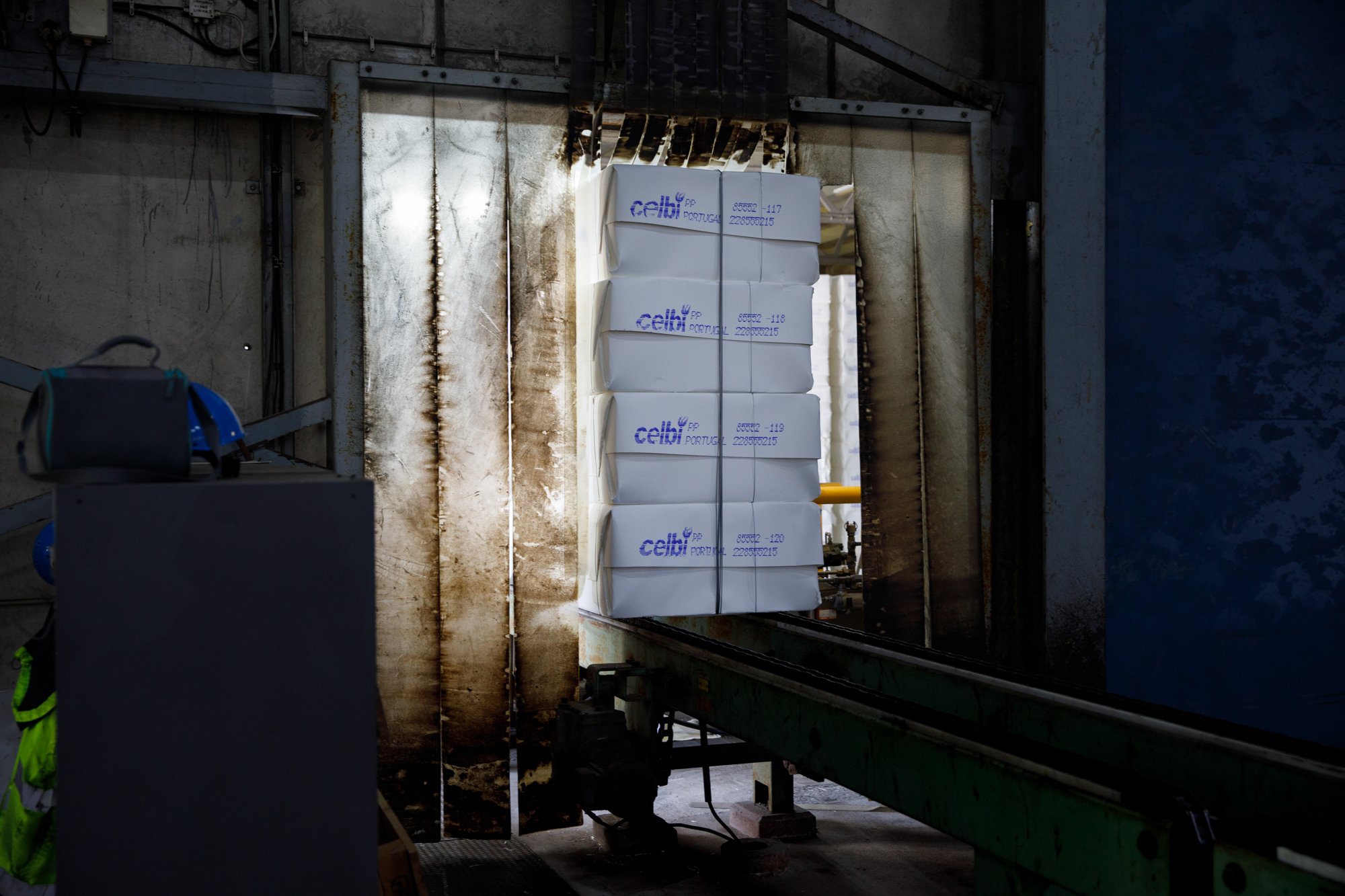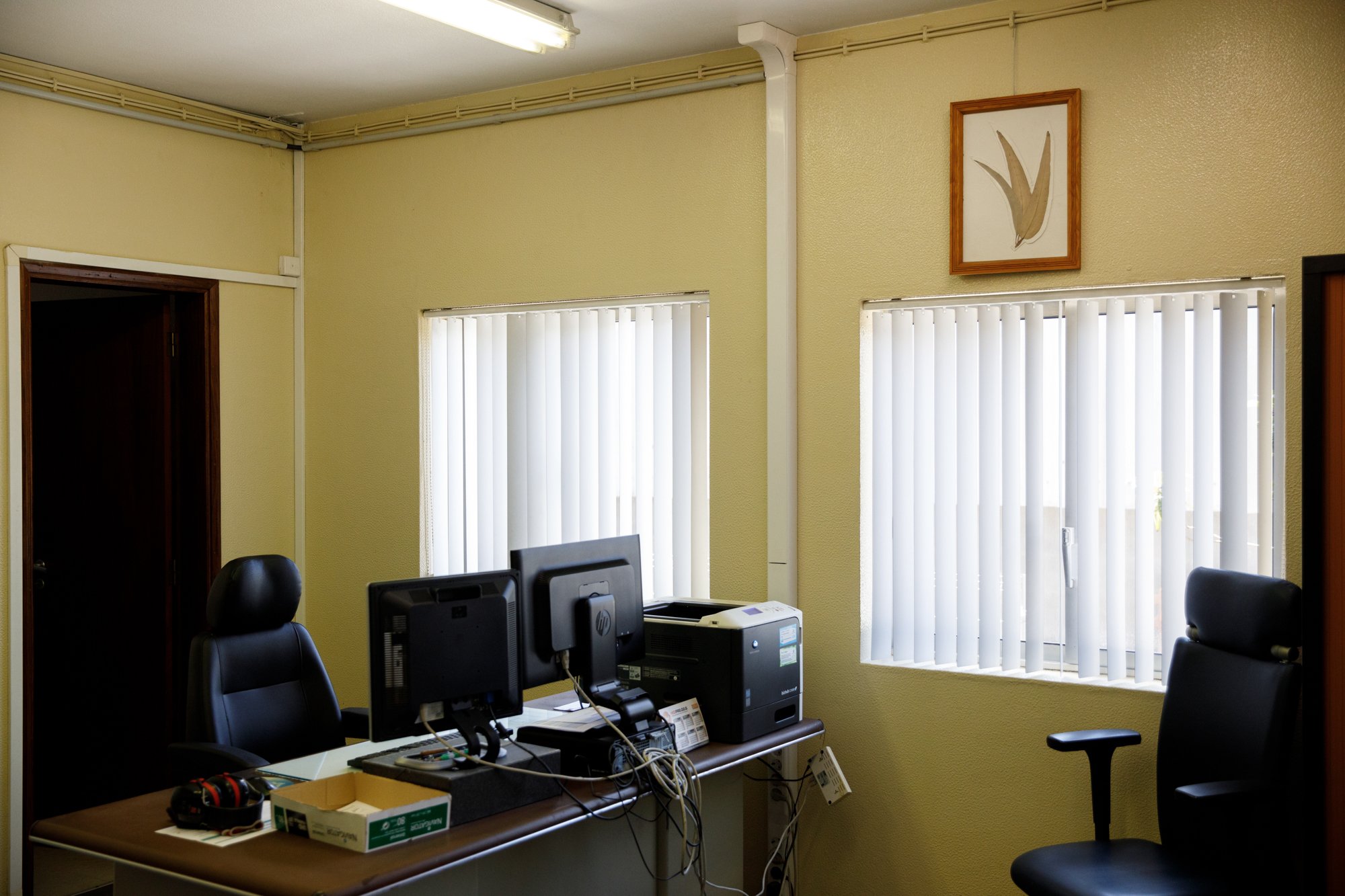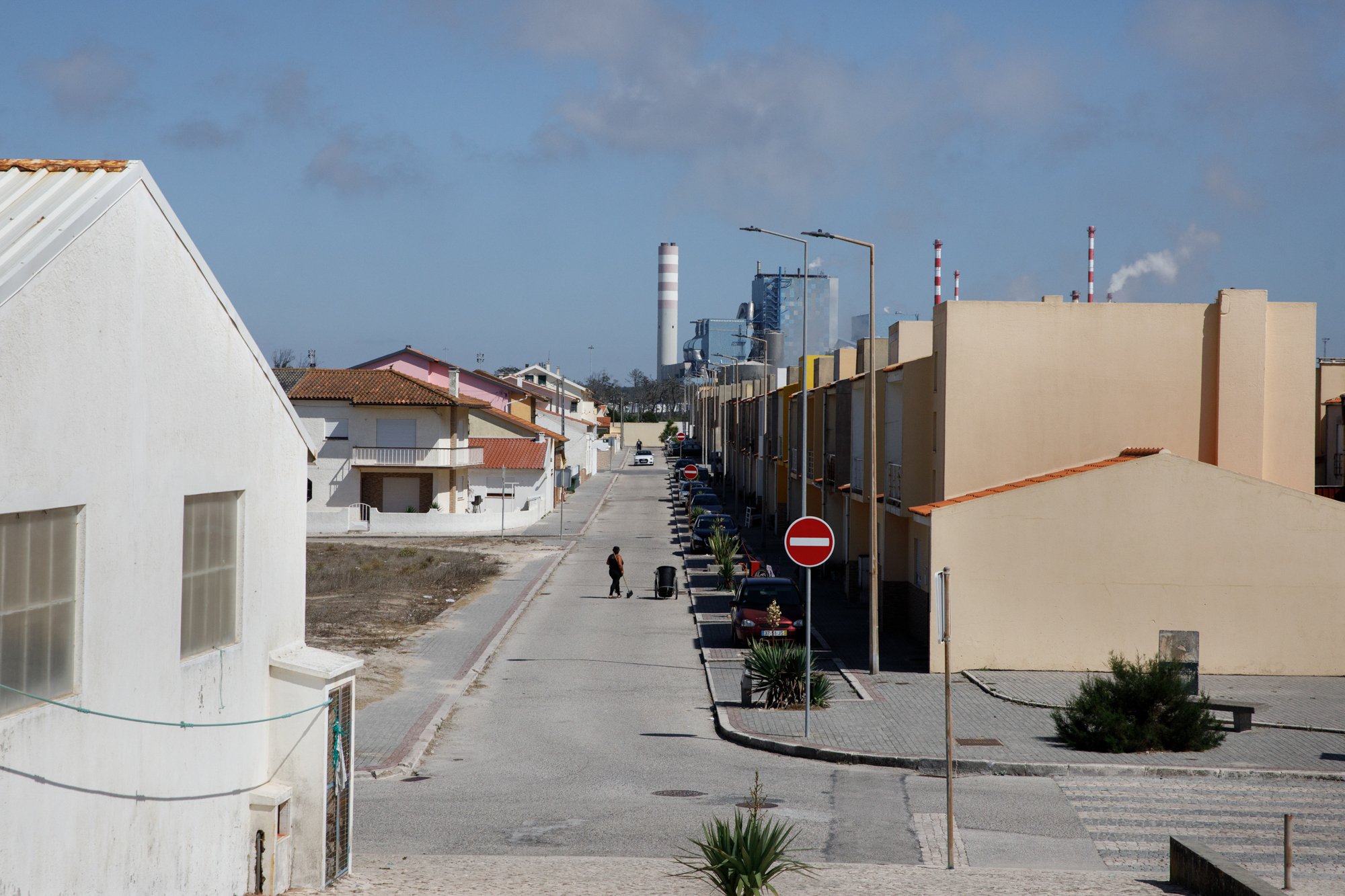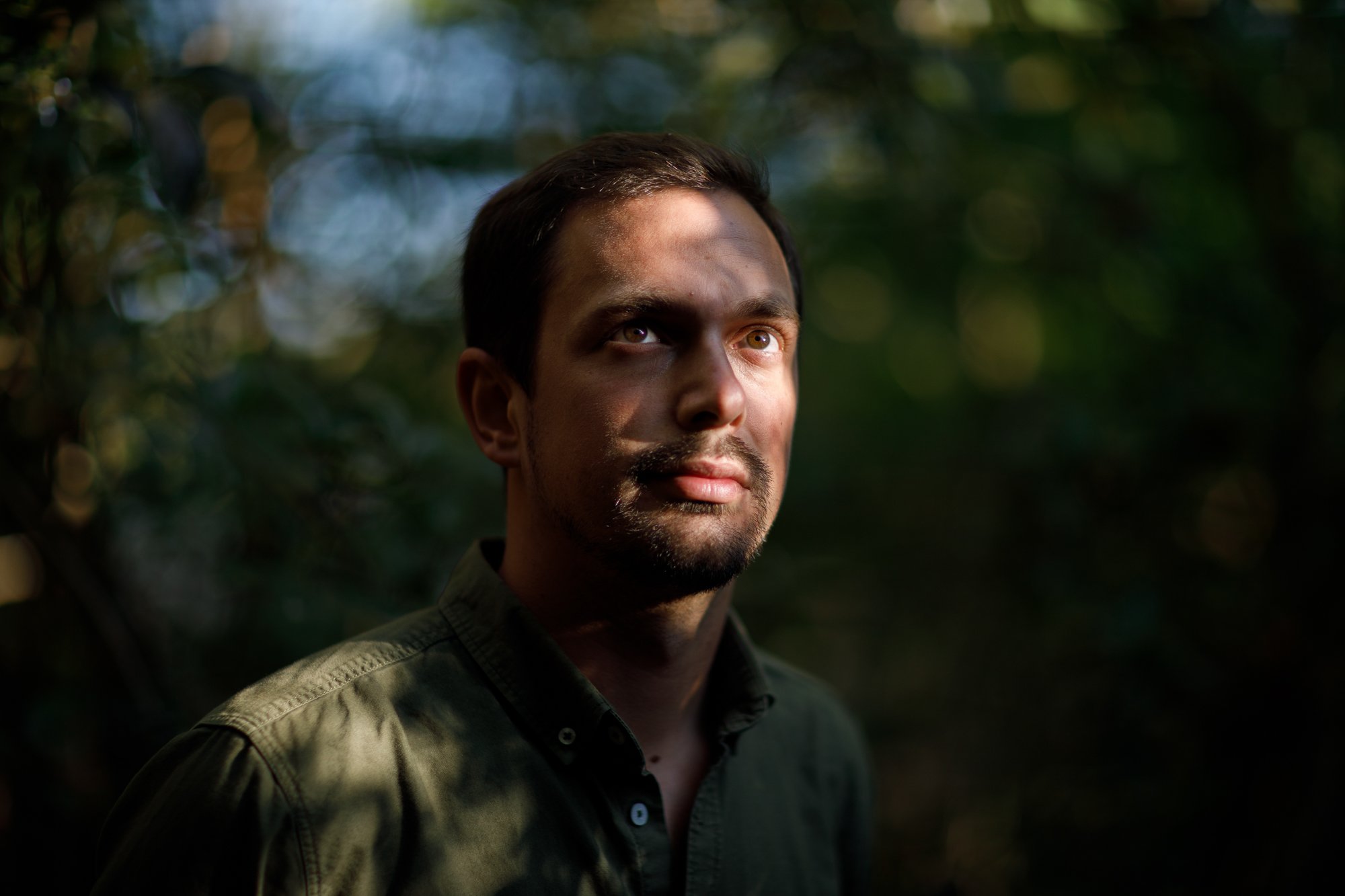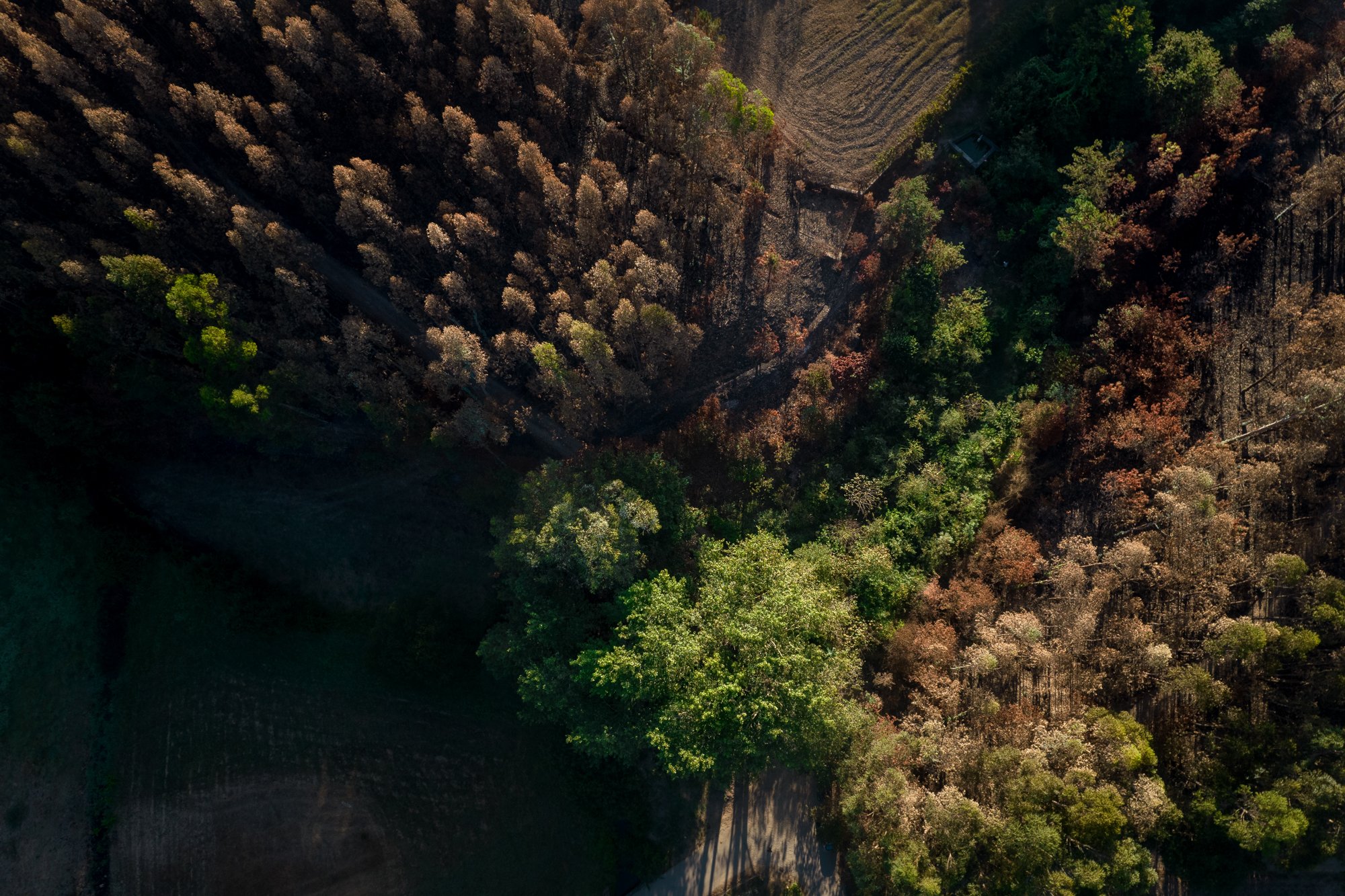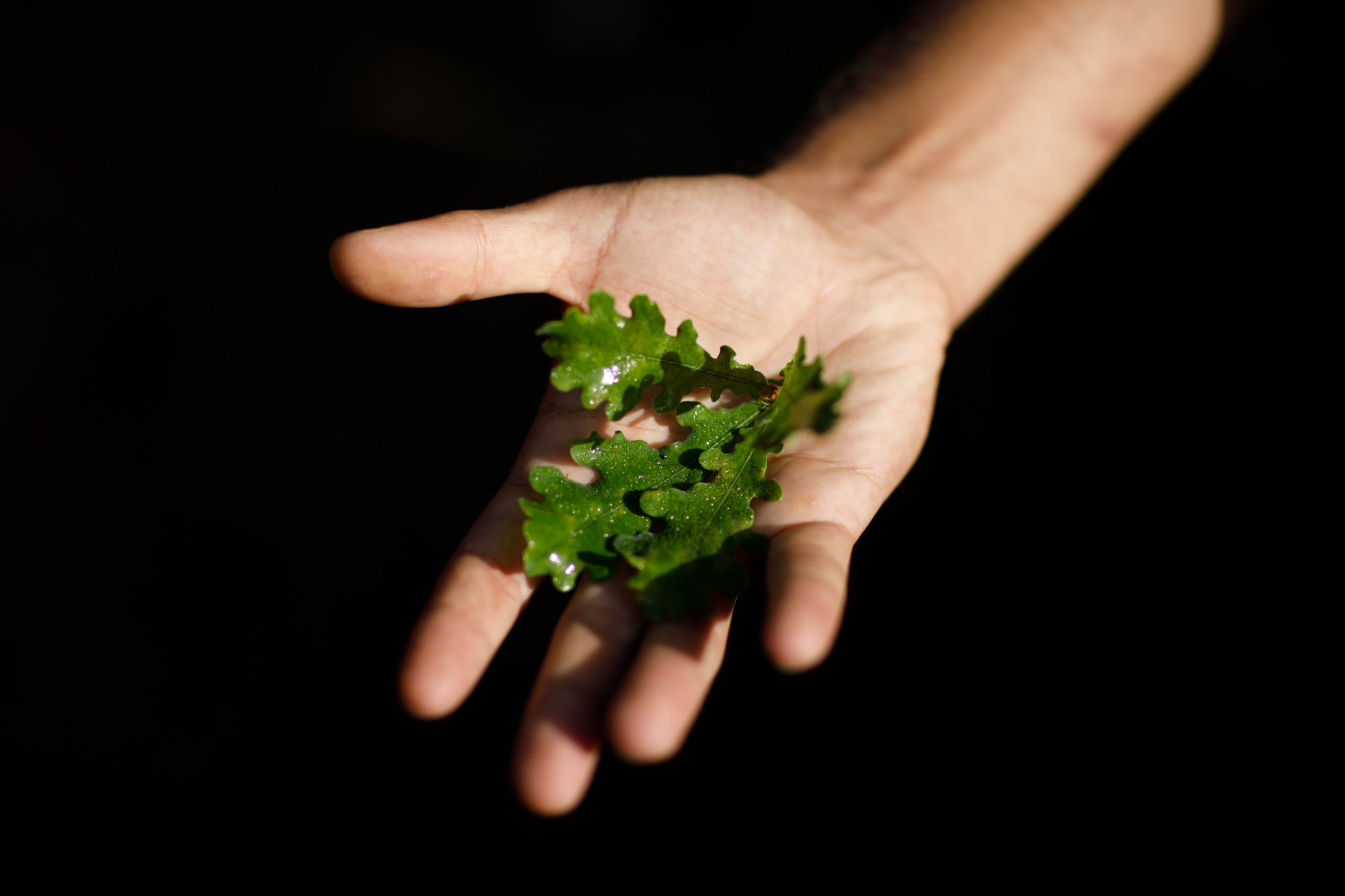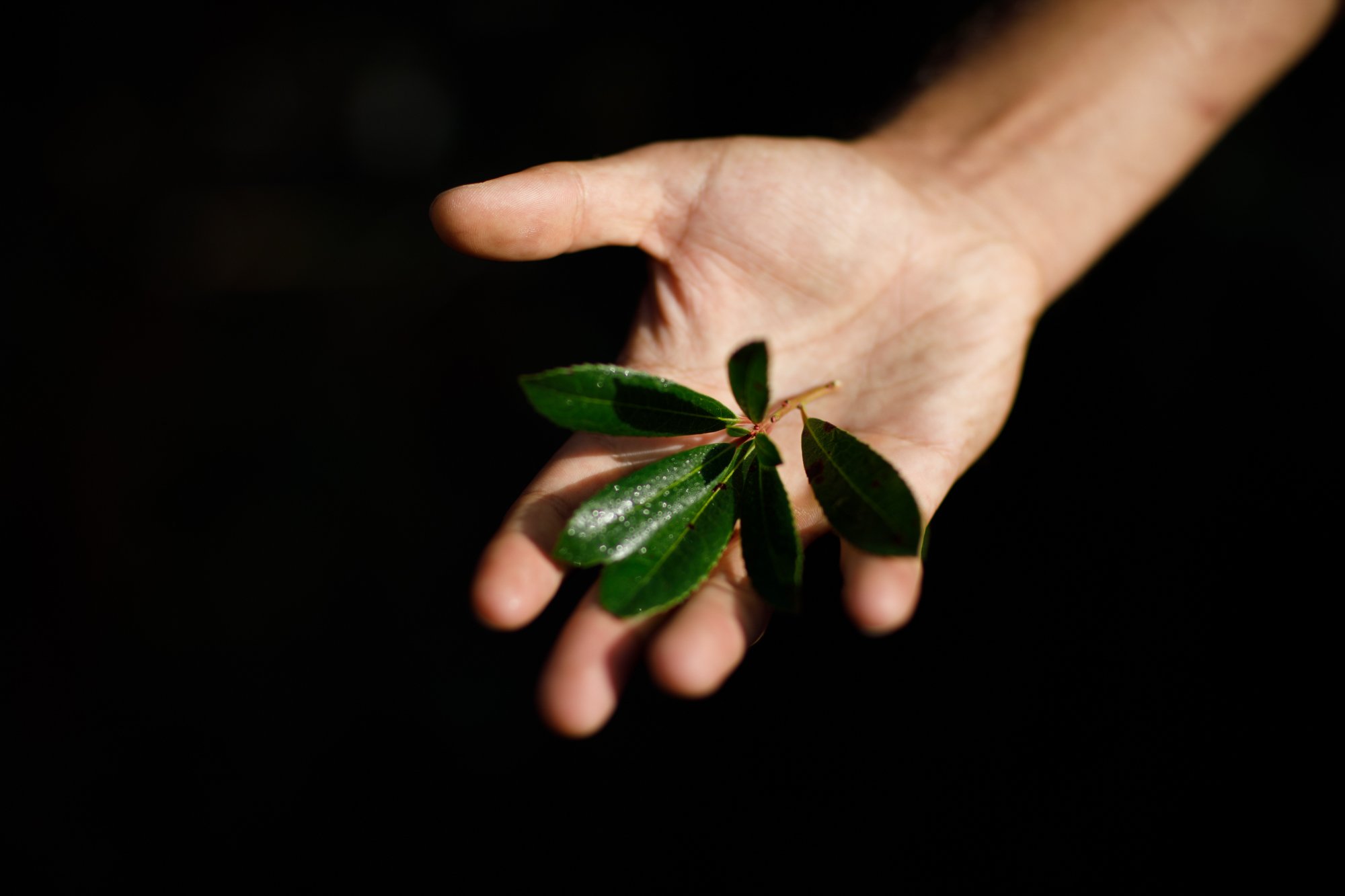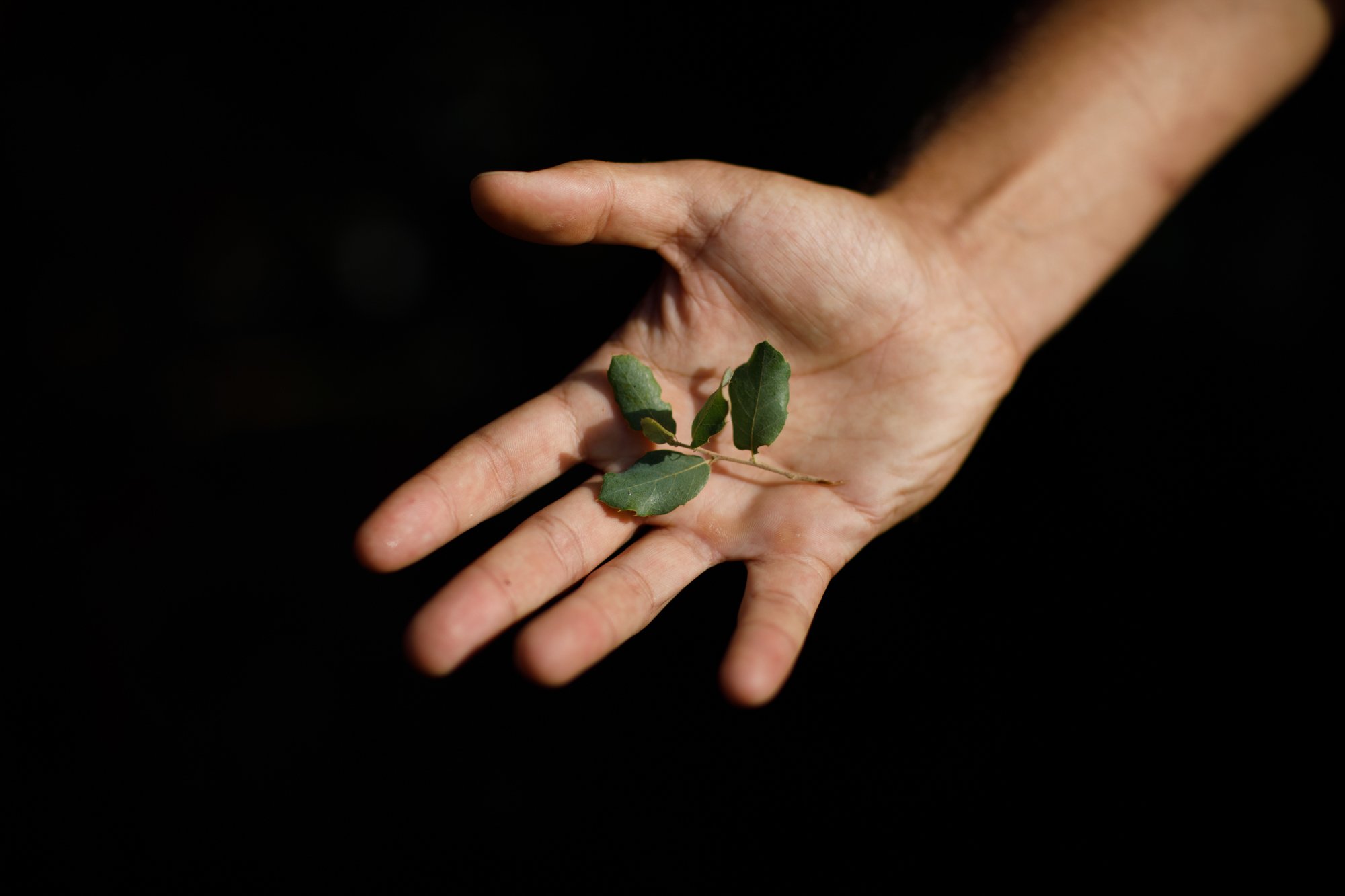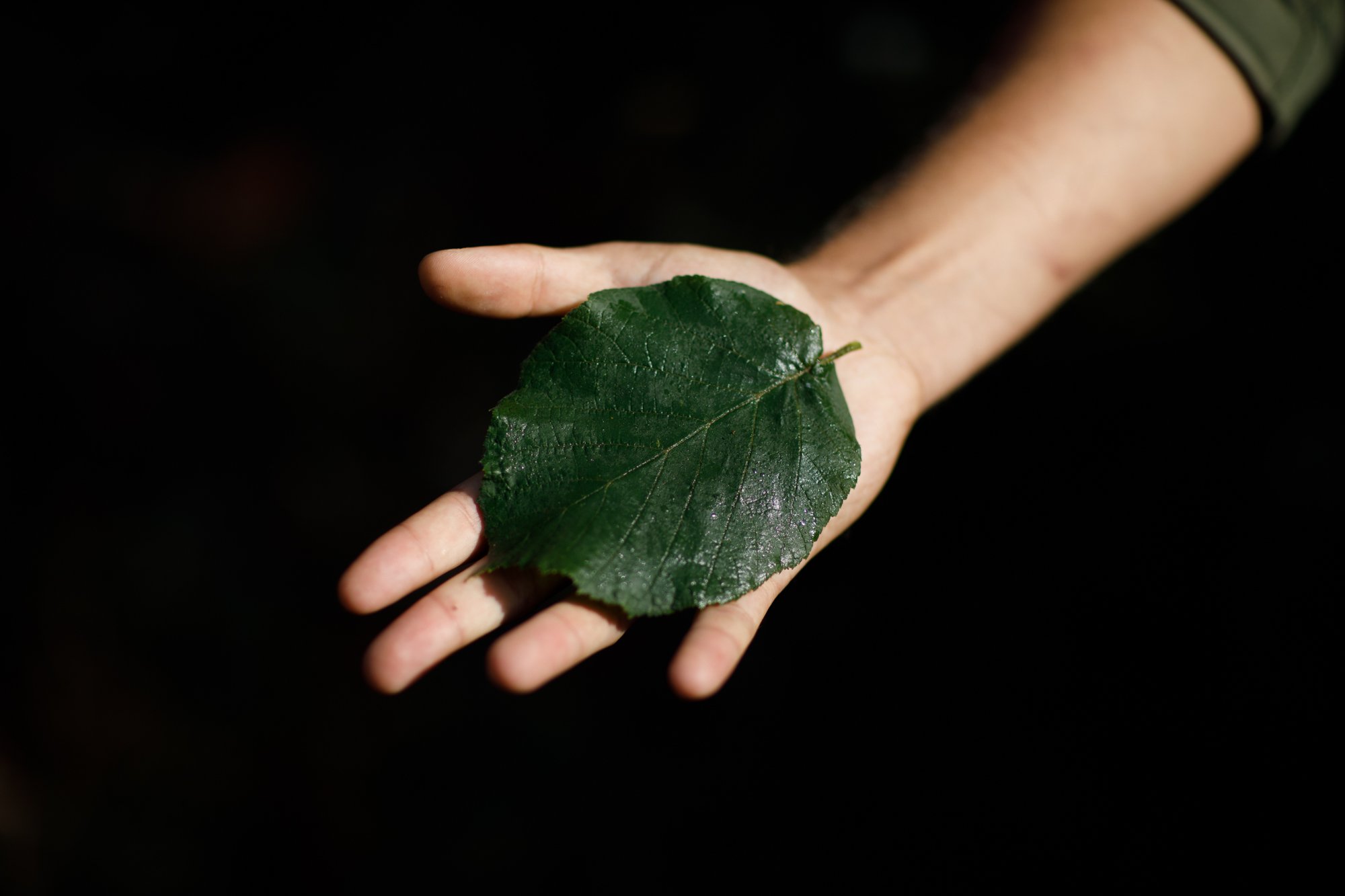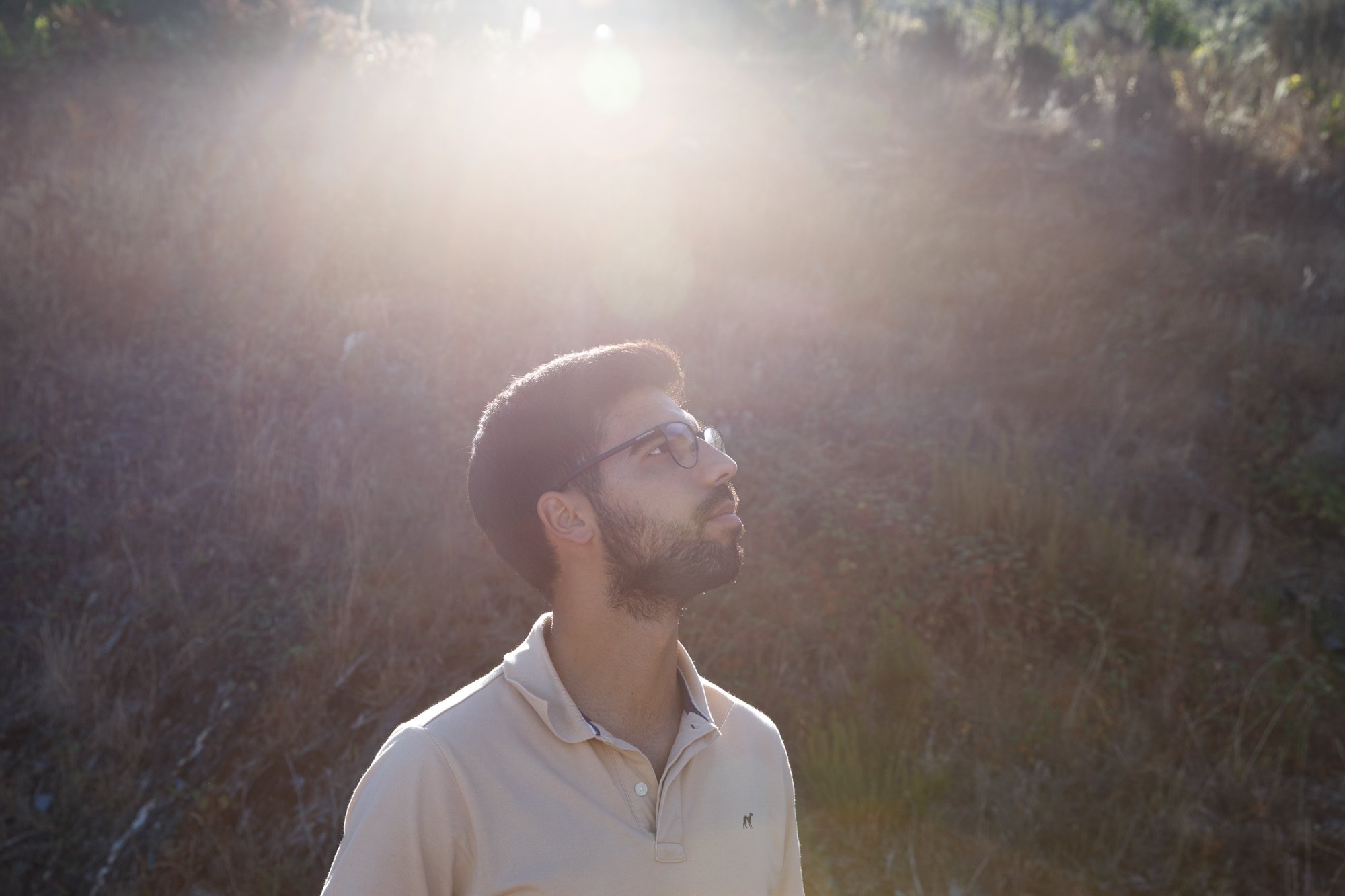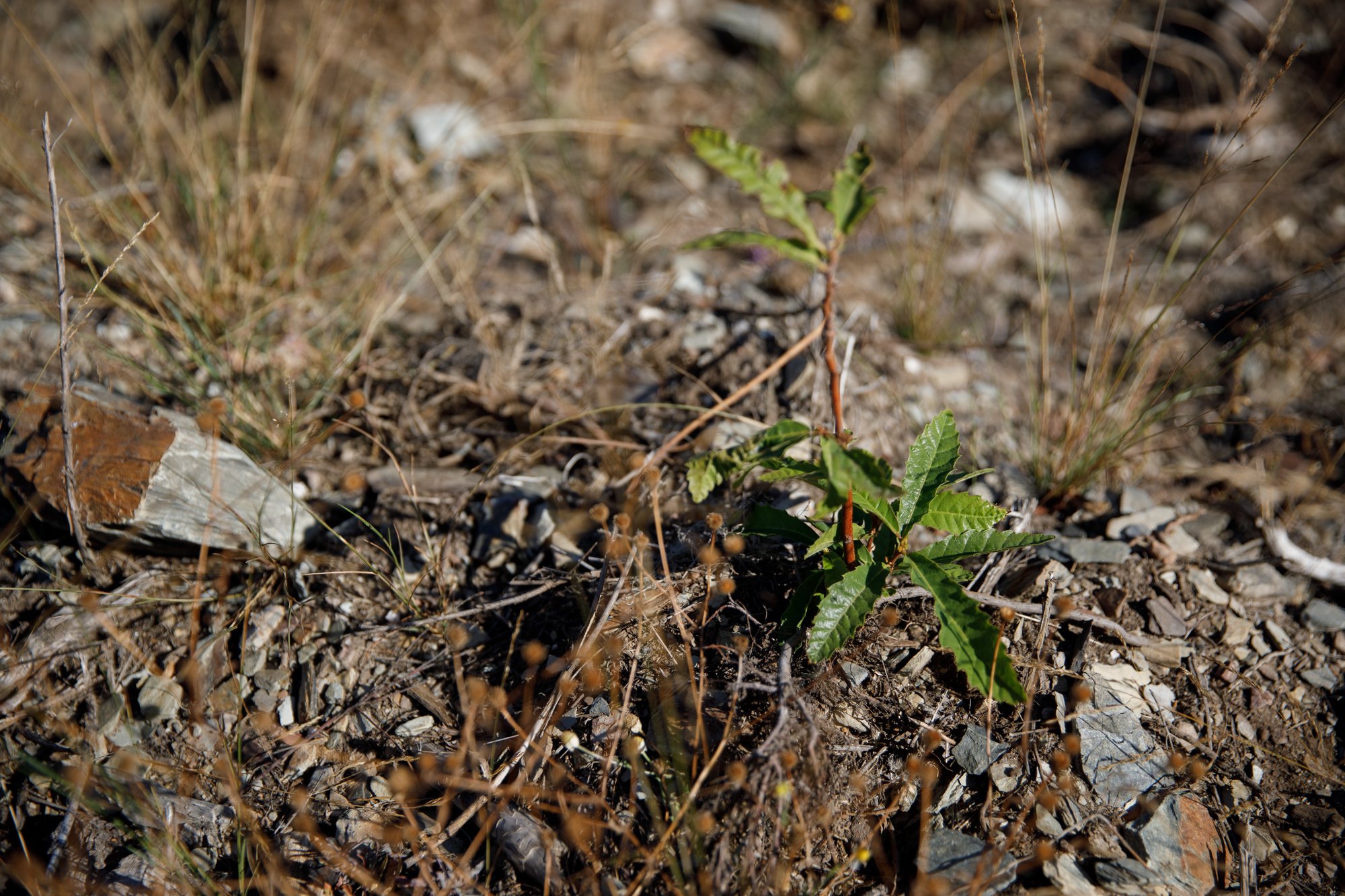“Eucalyptus Now” - Der Spiegel, September 2022
In October 2017, in the worst fires in recent memory in Portugal, my grandparent's home, in the Coimbra district, almost burnt down. We were lucky this time. Unfortunately, many families all over the country didn't have that luck, and either lost their homes or loved ones.
For two decades, Portugal has been the uncontested leader in burnt area in Europe. In our latest investigation for Der Spiegel, journalist Jan Petter and I tried to understand why. We talked to environmentalists, to pulp industry leaders, to forestry workers and biologists.
In 5 days, we travelled almost 2.000 km visiting eucalyptus plantations, pulp factories, burnt areas and environmental reserves.
Assignment work for Der Spiegel, 2022
”A large proportion of the trees that grow in Portugal today are purposefully planted. Quite a few of them come from the Altri tree nursery. The group also supplies private landowners with its seedlings. Even the Portuguese state buys its trees here, nine million can be grown every year. Although the site is huge, less than 50 people work there.”writes Jan Petter in the Spiegel piece
“An hour north and right by the sea, dozens of trucks deliver wood from Portuguese forests every day. The pulp factory looks like a eucalyptus-eating monster, excavators on five-meter-high towers throw tons of logs onto conveyor belts. At the end of the factory is a machine that takes up the space of a soccer field and dries pulp fibers 24 hours a day, seven days a week. It is only stopped every year and a half, it is said to be the largest in Europe.”
“When Rafael Marques reached the edge of the village that evening in July, the treetops of the adjacent eucalyptus forest were already burning. The horizon glows orange. The burning leaves dance quietly through the night like glowing snow. This is how fire spreads even further.
The fire destroyed more than 2500 hectares of land, two nearby highways have to be closed. But miraculously, the flames singe only the first row of trees on Marques' property. Apart from bushes and the garden shed, nothing burns down. In the midst of scorched earth, it's already blooming again on two manageable hectares, bumblebees are flying around. What sounds like good luck, he says, is the result of biological fire protection. The soil on his property was damp and the trees he planted were resistant. That's why the fire stopped - just like their forest, he and his comrades-in-arms would now like to reforest the burned area.”
“Duarte Neves is a prospective forest engineer and only 24, but he is already leading the only government project to reforest the burned area north of the Tagus. Monte Frio is a windswept mountain village on the edge of a natural park that has the cold in its name. Here, of all places, the last major fire in 2017 destroyed a good 95 percent of the landscape. Five years later, the traces of the fire can still be seen in the landscape like scars. Only a few trees are growing again.
The eucalyptus also thrives here. Officially, 26 percent of the forest is covered with it today, but the plant actually spreads uncontrollably in many places, even here in the nature park. Experts estimate that there could be twice as many trees.”
